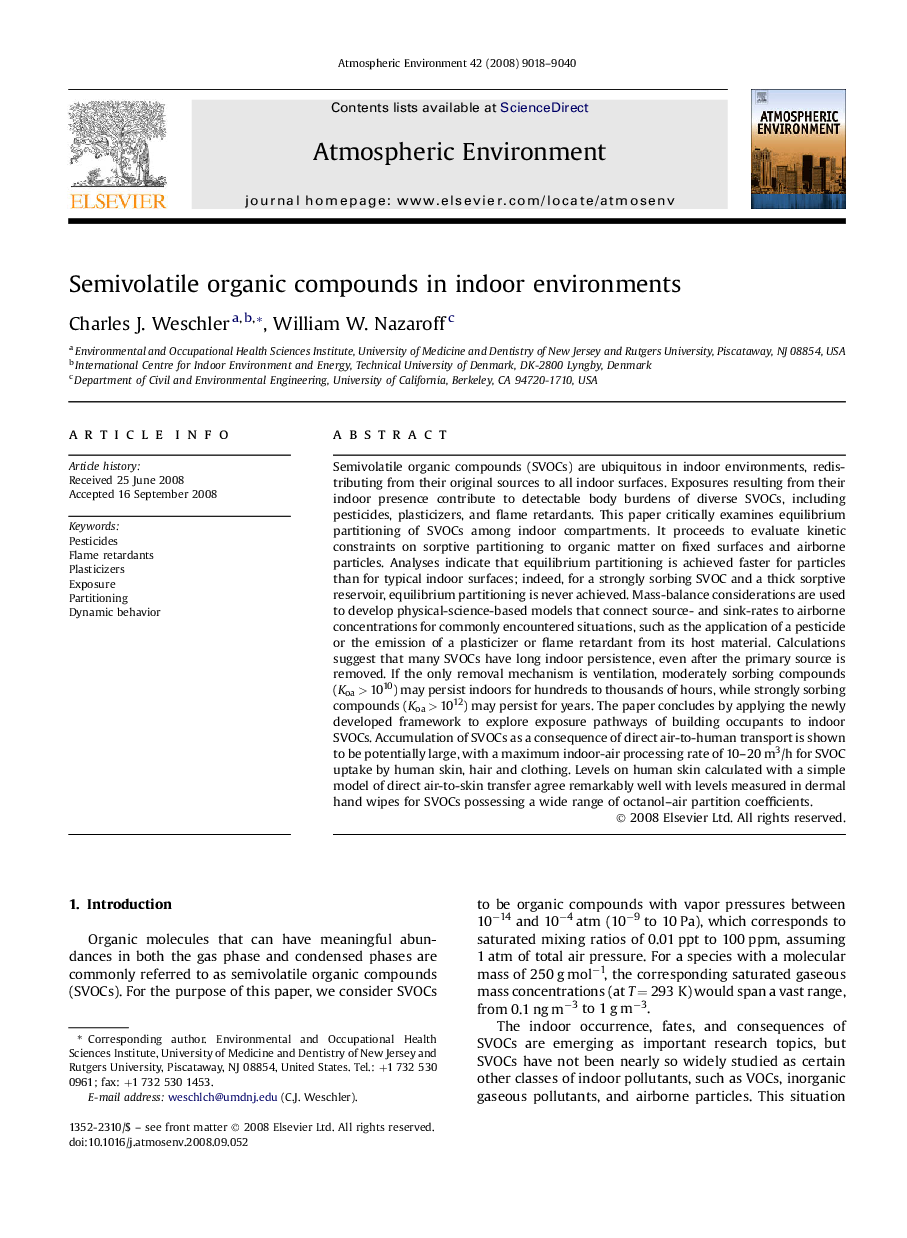| کد مقاله | کد نشریه | سال انتشار | مقاله انگلیسی | نسخه تمام متن |
|---|---|---|---|---|
| 4441374 | 1311104 | 2008 | 23 صفحه PDF | دانلود رایگان |

Semivolatile organic compounds (SVOCs) are ubiquitous in indoor environments, redistributing from their original sources to all indoor surfaces. Exposures resulting from their indoor presence contribute to detectable body burdens of diverse SVOCs, including pesticides, plasticizers, and flame retardants. This paper critically examines equilibrium partitioning of SVOCs among indoor compartments. It proceeds to evaluate kinetic constraints on sorptive partitioning to organic matter on fixed surfaces and airborne particles. Analyses indicate that equilibrium partitioning is achieved faster for particles than for typical indoor surfaces; indeed, for a strongly sorbing SVOC and a thick sorptive reservoir, equilibrium partitioning is never achieved. Mass-balance considerations are used to develop physical-science-based models that connect source- and sink-rates to airborne concentrations for commonly encountered situations, such as the application of a pesticide or the emission of a plasticizer or flame retardant from its host material. Calculations suggest that many SVOCs have long indoor persistence, even after the primary source is removed. If the only removal mechanism is ventilation, moderately sorbing compounds (Koa > 1010) may persist indoors for hundreds to thousands of hours, while strongly sorbing compounds (Koa > 1012) may persist for years. The paper concludes by applying the newly developed framework to explore exposure pathways of building occupants to indoor SVOCs. Accumulation of SVOCs as a consequence of direct air-to-human transport is shown to be potentially large, with a maximum indoor-air processing rate of 10–20 m3/h for SVOC uptake by human skin, hair and clothing. Levels on human skin calculated with a simple model of direct air-to-skin transfer agree remarkably well with levels measured in dermal hand wipes for SVOCs possessing a wide range of octanol–air partition coefficients.
Journal: Atmospheric Environment - Volume 42, Issue 40, December 2008, Pages 9018–9040